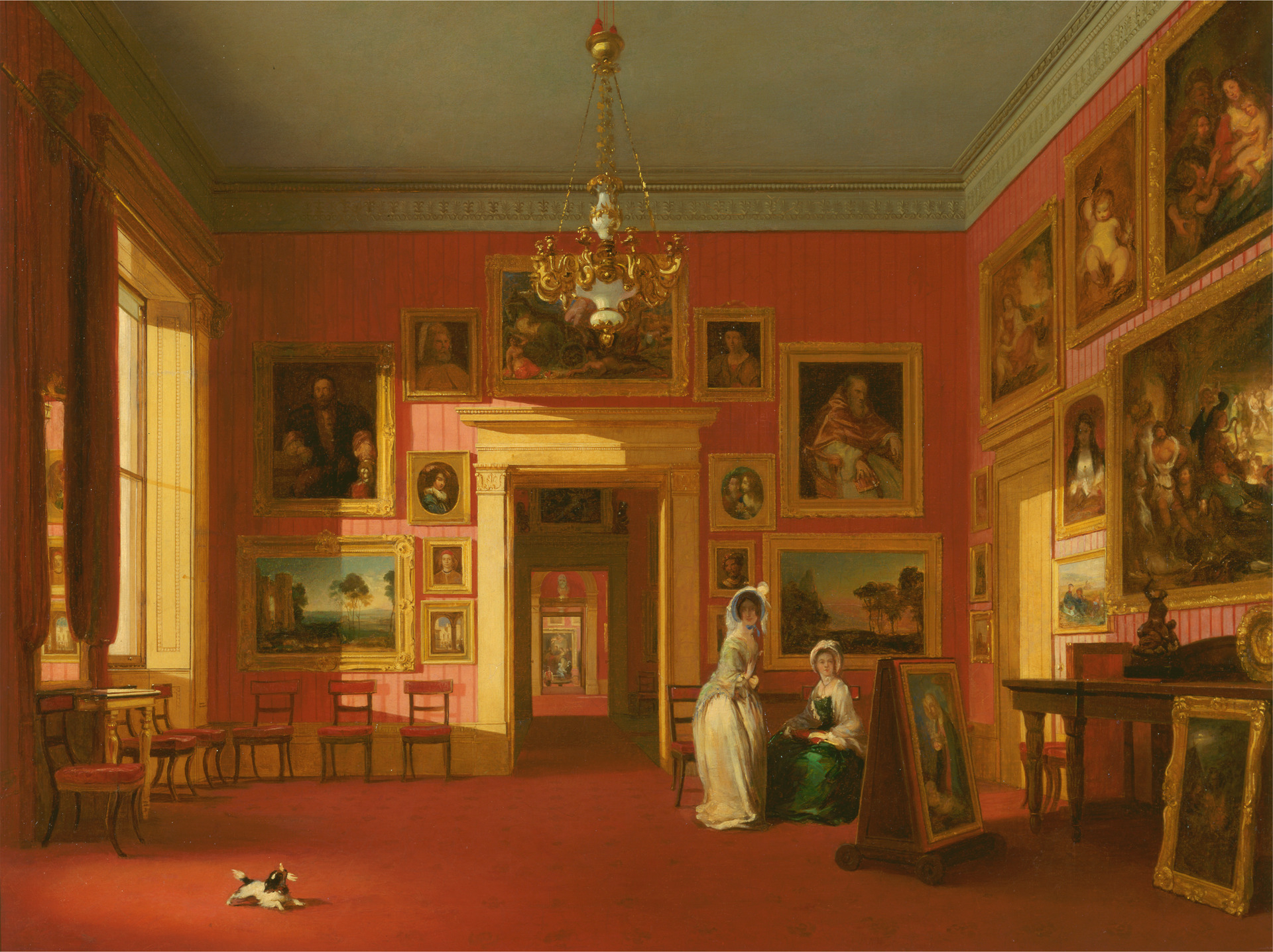
Country houses were made to be read—as symbols of power, political allegiance, taste and wealth. This places emphasis on the legibility of their architecture and decorative schemes, and the paintings, collections and even the furniture they contained. It also draw our attention to the skills required to decode —to read—these signs and symbols. The messages and processes of reading were carried further by the growing number of images of country houses produced through the eighteenth and nineteenth centuries: in private sketch books and journals and as engravings published as collections or incorporated into written guidebooks. These allowed the country house to be read in very different ways, as did its appearance in the pages of novels, sometimes as the backdrop or stage for the action, but also symbolic of social structures and relations. This conference seeks to explore all of these perspectives on reading the country house and links them to how the country house is read today, by house managers and visitors and by viewers of period dramas. The conference is to be held 16-17 November at Manchester Metropolitan University.
Provisional programme
Friday 16th November
9:00–10:45 amRegistration10:45–11:00 amOpening Remarks / Welcome Address11:00–1:00 pmPanel 1: Narrating and Interpreting Heritage
Isabel Budleigh, The National Trust Guidebook: Interpreting the Country House for the Visiting Public from the 1940s to the Present DayKayla Jones, Welsh Identity in Guidebooks: National Trust’s Penrhyn Guidebooks from 1952–2009Dan O’Carroll, ‘Steal a Mountain, and they make you a Lord’: Critical Heritage Storytelling at Penrhyn CastleMatthew Constantine, ‘Elegant and Useful?’: Interpreting Thomas Chippendale and Nostell
1:00–2:00 pmLunch2:00–3:00 pmPlenary 1: Prof. Kathryn Sutherland (University of Oxford)3:00–4:30 pmParallel Panels
Panel 2: Reading the Eighteenth-Century Country HouseFreya Gowrley, Publishing Wilkes’s ‘Villakin’: Reading, Reception and Reputation at Sandown CottagePeter Collinge, ‘A tasteless, wasteful grandeur, as dreary and ill-kept as possible’: The Response to and of Uninvited Visitors to Eighteenth-Century English Country HousesJemima Hubberstey, Reading Between the Lines:The Athenian Lettersand the Mithraic Altar at Wrest Park
Panel 3: Modernism and ModernityTeresa Trout, Paradise Reclaimed: Canonicity and the Country House in Modernist LiteratureAngelica Michelis, ‘Some folk can not abide here’: The Country House in Early Twentieth-Century British Crime FictionGary Kelly, Castles in Ireland: Castle Rackrent, Edgeworthstown, and Modernity
4:30–5:00 pmTea/coffee5:00–6:30 pmPlenary 1: Prof. Kathryn Sutherland (University of Oxford)3:00–4:30 pmParallel Panels 4 and 5
Panel 4: The Politics of StyleHelen Bates, ‘Prodigious quantity of pedigrees heaped all over the House’: Re-reading the Gothic Revival: the 2nd Duke of Montagu’s Obsession with Reviving Feudal-Style Rights and its Physical Legacy in his Country House and EstatesAndrew Hann, Reading and Writing a Classical Aesthetic: Sir Charles Monck’s Transformation of the Belsay Estate in NorthumberlandShaun Evans, Anglicised Enclaves? Welsh Ancestral Patriotism in the Country Houses of Wales: An Analysis of Herbert Sidney’s ‘The Escape of Henry Tudor from Mostyn Hall’ (1886)
Panel 5: Marginalised PerspectivesAmy Lim, The Appraising Eye of Celia FiennesBecky Harvey and Sarah Plumb, ‘They Liked to be cut off and lonely’: Questions of Isolation and Loneliness in Historical and Contemporary Readings of Calke AbbeyCharlotte Furness, Portraits on a Wall: Discovering the Forgotten Stories of Women of the Country House
6:30 pmWine reception
Dinner at delegates’ own expense in a nearby restaurant
Saturday 17th November
9:30-11:00 amPanel 8: Parallel Panels 6 and 7
Panel 6: The Houses of Poetry and ProseAnthony Walker-Crook, ‘Shock’d at the Place we hasted to return, / And left the horrid Mansion far behind’: Mary Leapor’s Chthonic Country HouseEmma Liggins, Elizabeth Gaskell at Capesthorne Hall: Venerating the Old in Victorian Haunted House Narratives
Panel 7: Reading decoration and displayClare Taylor, The Flock Train: Re-thinking Hierarchies of Decoration in the Country HouseElizabeth Jamieson, How Well Equipped is your Stable? The Country House Stable and its Contents, 1789–1914Nicola Walker, Displays of Purpose in the Country House from Home to Museum: Reading Spaces through Consumption and Display in the Long Eighteenth Century at Cannon Hall
11:00–11:30 amTea/coffee11:30–12.30 pmParallel Panels 8 and 9
Panel 8: Reading CuriositiesHannah Lee, Readings and Re-readings of ‘Moor’ Figurines in Country Houses in England and Italy 1600–1800Emile de Bruijn, Reading Orientalism: The Pagoda as Topos in the Context of the Country House
Panel 9: The Italianate ImpulseValerio Tolve, Villa Madama in Rome: Raffaello’s dream about ‘Le belle forme degli edifice antichi’Amy Parrish, ‘I am so tired with copies of the pictures he has chosen, that I would scarce hand up the originals’: The Reaction to Copies after Guido Reni in Eighteenth-Century Country Houses
12:30–1:30 pmLunch1:30–2:30 pmPlenary 2: Prof.Phillip Lindley (Loughborough University)2:30–4:00 pmPanel 10: Perspectives Past, Present and Future
Simon Spier, When is a Country House Not a Country House? The Mixed Reception of Mrs Bowes’ Mansion and MuseumEmma Slocombe, ‘A House that Smoulders rather than Sparkles’: Interpreting the Visitor Experience at KnoleBarbara Wood, Contemporary Readings and Future Meanings
Registration details to follow shortly – for further information, please contact Prof. Jon Stobart: j.stobart@mmu.ac.uk